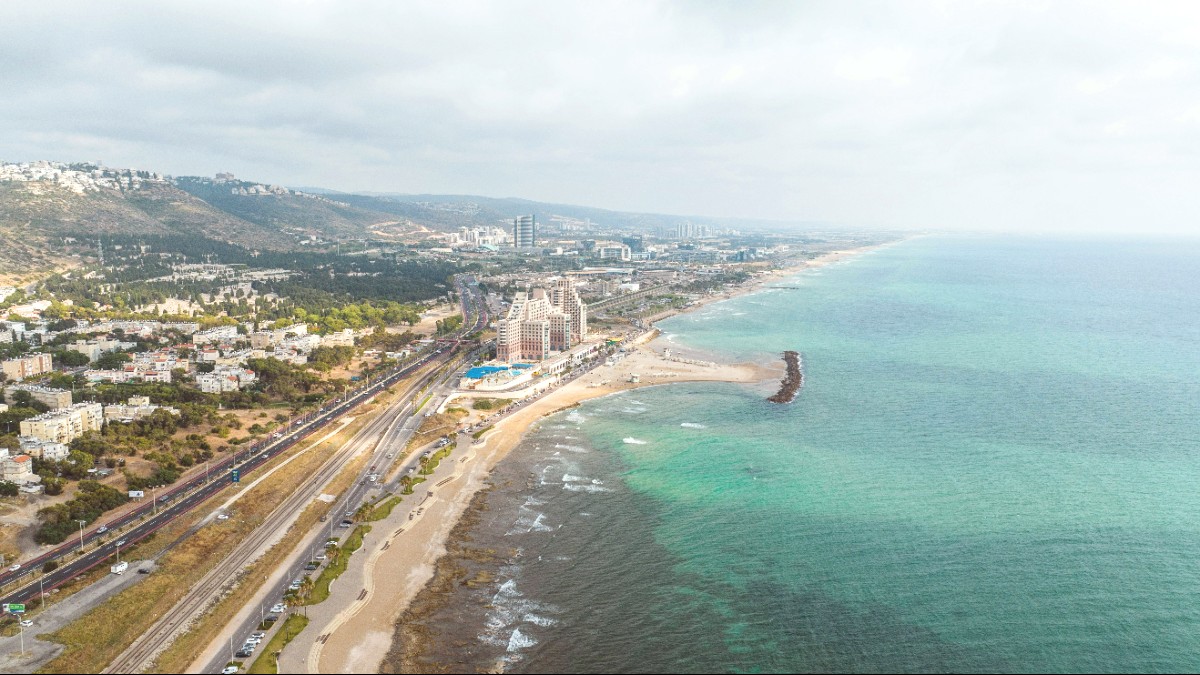
Mediterranean Coast, Israel And The Palestinian Territories
Haifa's food is a fusion of traditions. It draws heavily from Mediterranean influences, emphasizing fresh produce, olive oil, and seafood. Middle Eastern traditions add spices, grilled meats, and a love for hummus and tahini.
Jewish culinary heritage contributes flavors from both Ashkenazi and Sephardic traditions. Arab and Druze communities in the city add specific dishes and preparation methods.
Lunch often forms a significant meal (1-3 PM). Dinner is typically later (7 PM onwards). Breakfasts often feature fresh salads, cheeses, eggs, and bread.
A tip of 12-15% is common in restaurants.
Many restaurants are Kosher, adhering to Jewish dietary laws. Kosher establishments are closed on Shabbat and Jewish holidays. Many dishes, especially appetizers (mezze), are for sharing, encouraging communal dining.
Deep-fried balls from ground chickpeas, herbs, spices. Served in warm pita with salads, pickles, hummus, tahini.
Find: Widely available from street vendors, especially in Wadi Nisnas.
Thinly sliced, spiced meat (chicken, turkey, lamb) cooked on a vertical spit. Served in pita or laffa with fillings like Israeli salad, fries, hummus, tahini.
Find: Abundant at street food stalls and casual eateries.
A creamy, savory dip from mashed chickpeas, tahini, lemon juice, garlic. Often topped with olive oil, paprika. Served with fresh, warm pita bread.
Find: Seek out dedicated 'hummusiyas' for freshest versions.
Non-alcoholic: Freshly squeezed juices (orange, pomegranate, carrot). Limonana (lemonade with fresh mint) is refreshing. Sahlab (warm, milky, spiced drink) is popular in winter. Alcoholic: Arak, local Israeli wines, craft beers.
Knafeh: Sweet cheese pastry soaked in syrup, often with pistachios. Malabi: Creamy milk pudding flavored with rosewater. Halva: Dense, sweet confection from tahini.
Haifa holds several upscale restaurants, especially in Carmel Center and German Colony. Modern Israeli cuisine or international fine dining. Reservations recommended.
Abundant throughout the city. Diverse options: Mediterranean, Middle Eastern, Italian, Asian. German Colony and revitalized Downtown areas have good selections.
Wadi Nisnas is best for authentic, affordable street food. Explore its alleys for falafel, shawarma, hummus, traditional sweets. Downtown also holds budget-friendly meals.
Due to Haifa's diverse population, find Italian pizzerias, pasta restaurants, Chinese, Japanese (sushi), Indian, and Ethiopian restaurants.
Many neighborhoods offer a mix of these international options.
A traditional fresh produce market where locals shop. It undergoes revitalization, with newer food stalls and cafes.
Local markets sometimes host seasonal food events.
Awareness of dietary restrictions is growing. Many places accommodate gluten-free requests.
Especially for naturally gluten-free dishes like grilled meats, salads, rice-based meals. Some restaurants have gluten-free bread or pasta.
Online food blogs and dedicated apps (e.g., HappyCow for vegan/vegetarian) can help locate suitable dining establishments.
Learn basic Hebrew phrases to communicate dietary needs.
Highly recommended, especially in Wadi Nisnas. Guided experience, sample street foods, traditional dishes, sweets.
Less common in Haifa compared to other regions.
Around HaNamal Street, new restaurants with innovative concepts.
Local ingredients with modern techniques, often in stylish settings.
Some fine dining establishments present tasting menus demonstrating regional flavors with a contemporary twist.
Annual event celebrating Hanukkah, Christmas, Eid al-Adha. Features food stalls, performances, open houses in Wadi Nisnas and German Colony.
One of Israel's major film festivals, drawing international and local productions. A platform for cinema and cultural exchange.
Periodically features exhibitions and events demonstrating local talent.
Exploring Haifa's food scene forms a journey in itself. Do not hesitate to try new things.